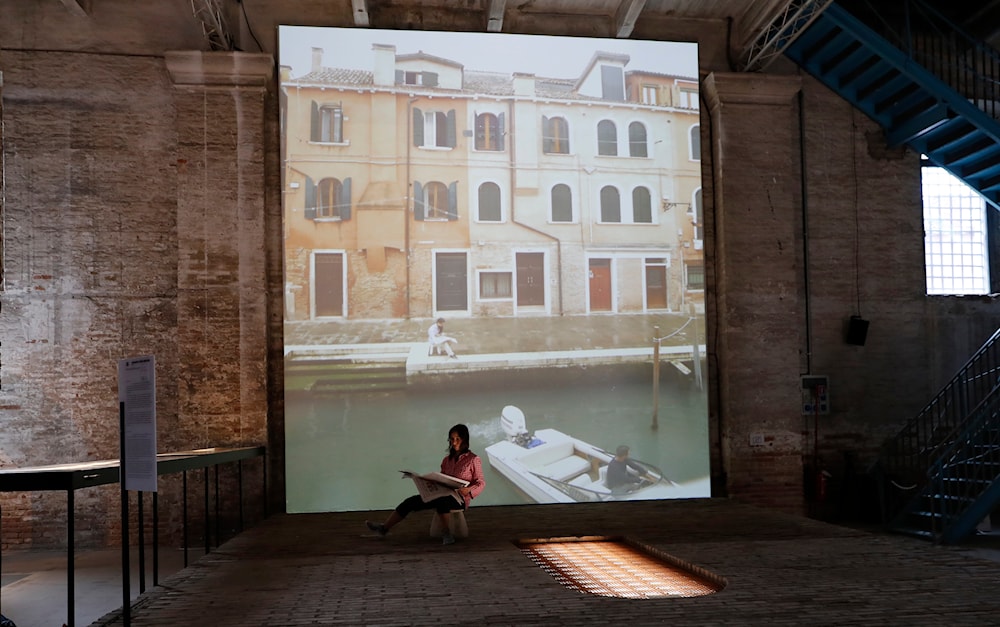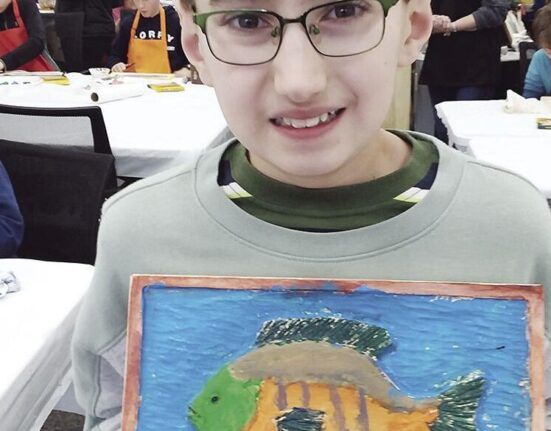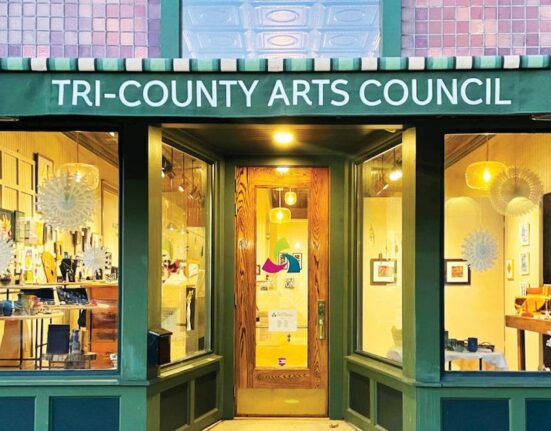The Art Not Genocide Alliance (ANGA) group released an open letter signed by past and future Biennales participants in the Venice Biennale, condemning “Israel’s” partaking at the event.
-

An installation by Rozana Montiel, at the Biennale International Architecture exhibition, in Venice, Italy, Wednesday, May 23, 2018. (AP)
More than 8,700 artists and cultural workers have called for the exclusion of “Israel” from participating in the world’s biggest art event, the Venice Biennale, over its genocide against Gaza. The Venice Biennale, often referred to as the “Olympics of the art world” as it has a vast history in presenting talent from all over the world, initiates its 60th International Art Exhibition on April 20th.
The Art Not Genocide Alliance (ANGA) group released an open letter yesterday signed by past and future Biennales participants in the Venice Biennale condemning “Israel’s” partaking at the event.
The petition stressed: “Any official representation of Israel on the international cultural stage is an endorsement of its policies and of the genocide in Gaza,” emphasizing that “The Biennale is platforming a genocidal apartheid state.”
“Israel” has a national pavilion in the Giardini, the parkland where the biennial art festival takes place, alongside 28 countries.
The petition labeled the act of allowing “Israel” to be part of the Biennale as a “double standard”, arguing that the organization excluded South Africa during its apartheid era as well as Russia in 2022 amid the start of the Ukraine-Russia conflict.
It is noteworthy that when TIME reached out to the Biennale for comment, the latter did not immediately reply to questions about the petition.
The petition stated that “While the Israeli pavilion presses ahead, the genocidal death toll in Gaza and the West Bank increases daily,” adding, “While Israel’s curatorial team plans their ‘Fertility Pavilion’ reflecting on contemporary motherhood, Israel has murdered more than 12,000 children and destroyed access to reproductive care and medical facilities.”
The Irony and Hypocrisy continue
The theme of this year’s Biennale is “Foreigners Everywhere.” Its curator Adriano Pedrosa stated that the background of this year’s exhibit is “a world rife with multiple crises concerning the movement and existence of people across countries, nations, territories, and borders, which reflect the perils and pitfalls of language, translation, and ethnicity, expressing differences and disparities conditioned by identity, nationality, race, gender, sexuality, wealth, and freedom.”
It is important to note that Palestinians have no national pavilion. However, they are embodied this year in Biennale’s official collateral events by a project from a collective co-founded by Palestinian activist Issa Amro from al-Khalil and Berlin-based South African photographer Adam Broomber who also signed the petition.
Artist Ruth Patir, whose exhibition will be organized by Mira Lapidot and Tamar Margalit, will appear on behalf of “Israel” at the Venice Biennale.
On the other hand, another exhibition was submitted by the Connecticut-based Palestine Museum, which would showcase the work of 24 Palestinian artists. However, Biennale refused this proposal as an official collateral event and opted for this show to be presented simultaneously as an unofficial collateral exhibit hosted by Venice’s Palazzo Mora.






